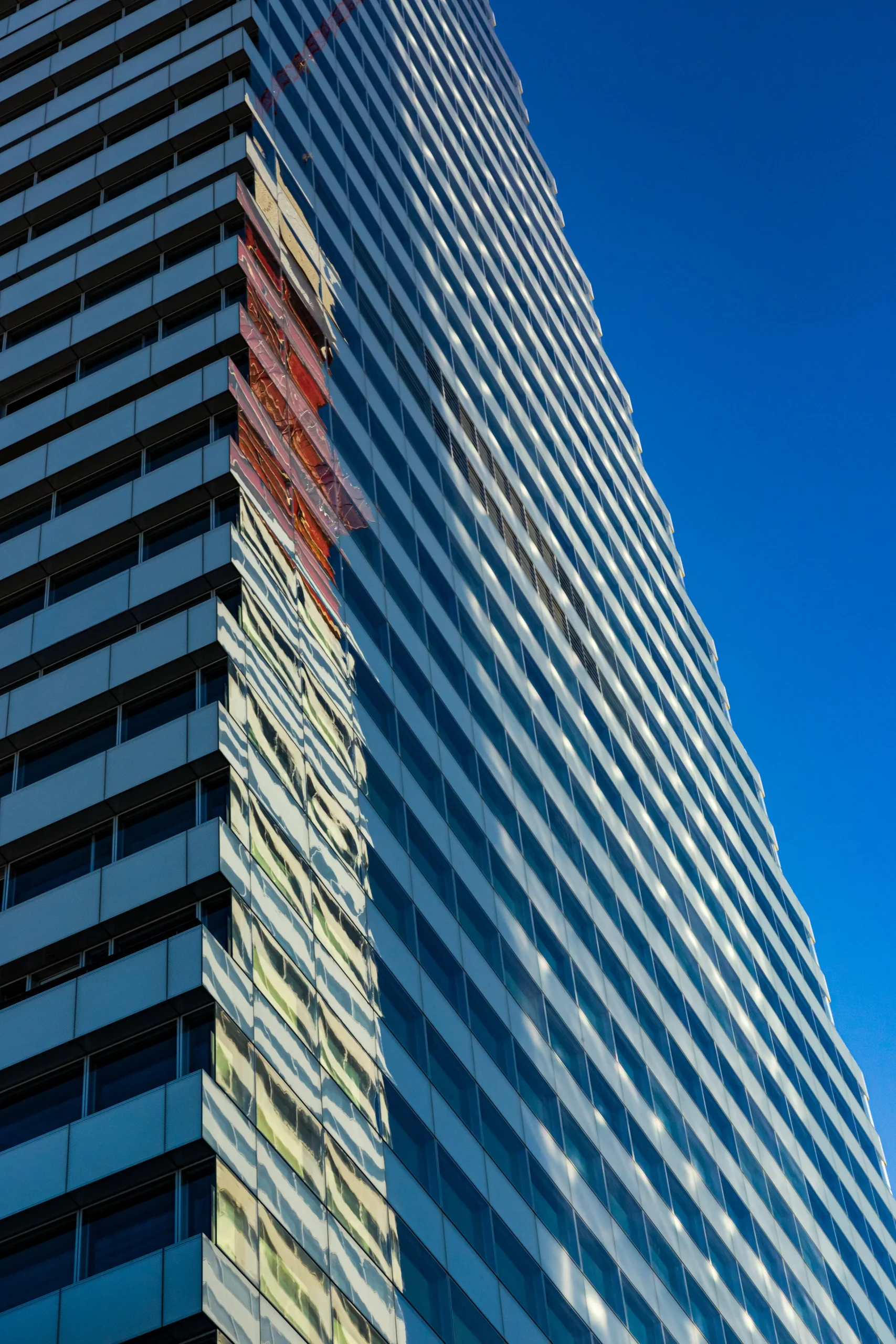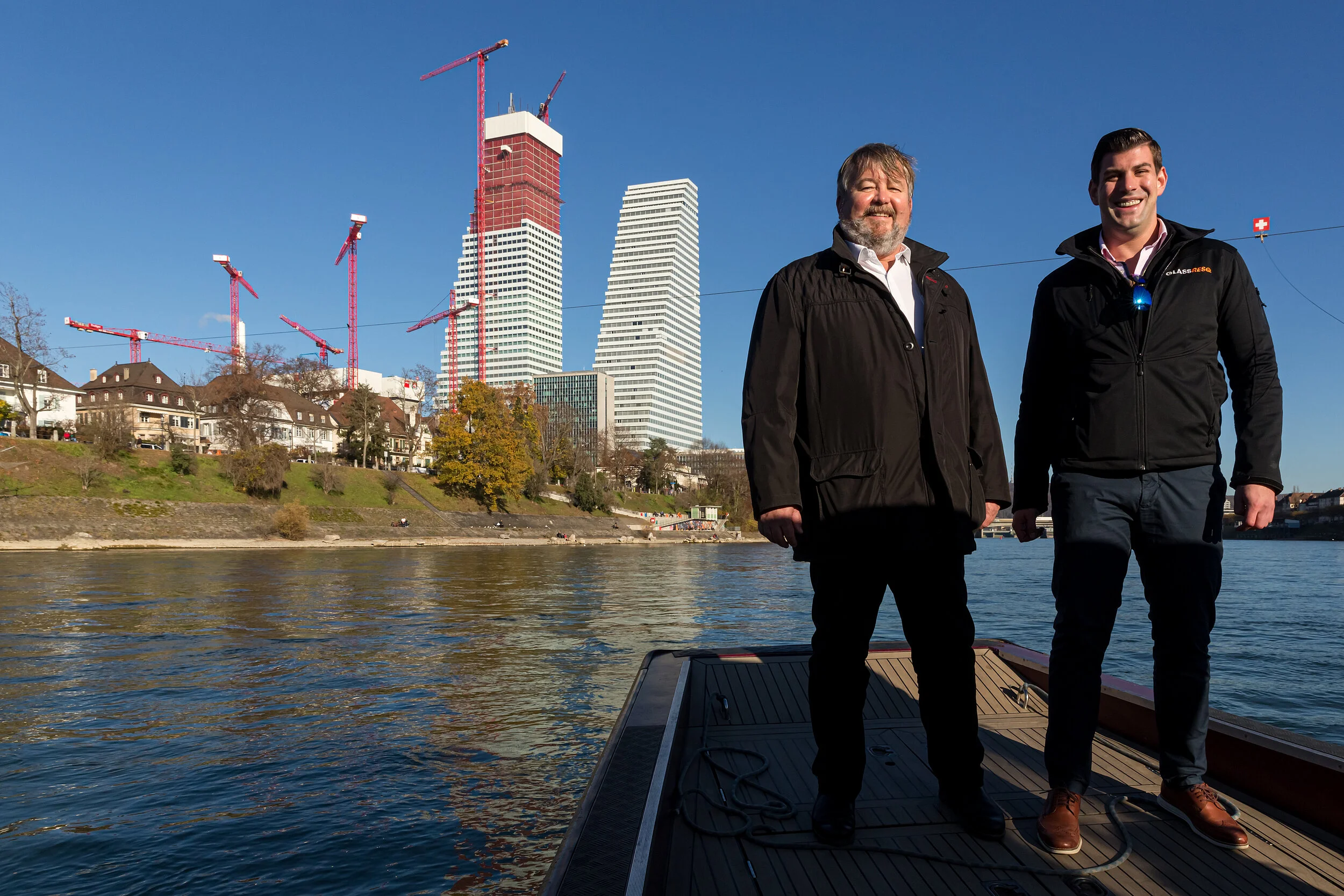When glass surface damage is discovered shortly before a building handover, time is money. The glass restoration process from GLASSRESQ convinces the insurance experts at Helvetia. Thanks to this process, the original value of a window can be quickly and easily restored.
If anyone understands time pressure, it is certainly building owners. When a large construction project is handed over, months or even years of work come to an end. The entire structure is meticulously inspected for possible damage, and scratches, cracks, or breaks in panes are often found. Windows are installed relatively early in the construction process and are therefore vulnerable. “Protective measures and construction work don’t always go hand in hand harmoniously,” says Francis Geng, Head of Claims, Technical Insurance Department Switzerland at Helvetia Insurance. Where there is planing, there are shavings—or in this case: glass sometimes gets scratched.
More glass is used today than before—after all, living and working spaces are supposed to be flooded with light and provide generous views. Modern window panes are generally robust but also delicate: a moment of carelessness or a spark during work is enough—and the damage occurs. Buyers of construction projects want flawless goods, in the case of windows, completely intact panes. “Psychology also plays a role here,” explains Geng, “we want to know something is truly undamaged when it’s new.” Accordingly, the desire to restore the window to its original condition after damage is very strong.
 No Material Weakening Thanks to GLASSRESQ
No Material Weakening Thanks to GLASSRESQ
The first, understandable impulse is to immediately replace defective panes. But this is easier said than done at this stage of construction. Replacement often involves its own risks: “While small windows can be replaced without problem, a crane may be necessary for a glazed terrace door,” explains Geng. And if the surrounding work is already finished, those responsible think twice before bringing in a crane that has to roll through the garden. Furthermore, delivery times could delay repairs excessively—possibly until tenants have already moved in and furnished the property. In short: careful consideration is required between new risks caused by replacement and repairing the existing pane.
“Here GLASSRESQ scores with their restoration method,” confirms Francis Geng. The special procedure relies on a temperature-dependent smoothing process with a major advantage: “It does not weaken the material, so there is no loss of value.” The original value of the window is preserved—quickly, easily, and even dust-free.
Geng admits that restoration is not always possible. However, he appreciates that GLASSRESQ’s service technicians inspect reported defects on a property and provide a detailed assessment for each individual pane. If there is a residual risk that restoration will not return the pane to its original condition, replacement is recommended. “This creates very high transparency for all parties involved—owners, builders, and insurers.”
Restoration Instead of Replacement Is Becoming Increasingly Important
Since a deductible is charged for defective windows, the focus is naturally on costs. But not only that. Restoration also conserves resources. Geng suspects that sustainability will play an even greater role in this area in the future than it already does today. Rising energy prices, for example, could increase the cost of large windows. The higher the production and manufacturing costs, the more worthwhile preservation becomes. He also notes a societal trend towards repairing valuables: “Why should a pane be thrown away just because it has a scratch?”


Helvetia increasingly sees its role as advising its customers: on the one hand with regard to preserving value, and on the other with regard to protecting the environment and resources. All Helvetia building insurance loss adjusters are trained technicians and engineers who later acquired the necessary insurance knowledge. This enables them to speak on equal terms with construction experts and to argue in favor of resource-saving solutions. “This is one of our contributions to sustainability,” says Francis Geng proudly.
Helvetia Construction Insurance
From the first groundbreaking to the finished building, many hands are at work—and accidents can happen. Construction insurance protects you from financial consequences throughout the entire construction phase. Helvetia Construction Insurance is a combination of construction all-risk and builder’s liability insurance. It protects against financial consequences due to damage to the building under construction and claims when uninvolved third parties are harmed by construction activities. Read more about Helvetia here.
GLASSRESQ AG
GLASSRESQ AG, with two locations in Switzerland as well as others in Germany, Austria, Czech Republic, England, and the USA, offers innovative solutions for the simple and cost-effective repair of glass surface damage.
The Collaboration
Typically, the insurance customer commissions GLASSRESQ for a repair. Helvetia then inspects and compensates the damage. The decision criteria for GLASSRESQ’s service are quality, speed, and their proprietary restoration process.


 No Material Weakening Thanks to GLASSRESQ
No Material Weakening Thanks to GLASSRESQ